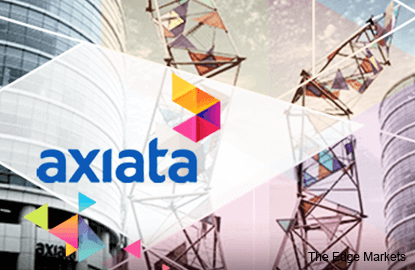
This article first appeared in The Edge Malaysia Weekly, on November 30 - December 6, 2015.

Axiata Group Bhd may have reported a stronger earnings performance on the back of higher revenue in the nine months ended Sept 30, 2015 (9MFY2015), but there is no time for the telco to catch its breath as it has yet to meet some of its key performance indicators (KPIs).
In 9MFY2015, Axiata registered a net profit of RM2.08 billion, including recognition of disposal gains from towers in Indonesia in December 2014. The group’s earnings grew 18.2% as its revenue, which benefited from the weaker ringgit, grew 4.5% to RM14.52 billion.
For its third quarter ended Sept 30, 2015 (3QFY2015), Axiata saw a 40% jump in net profit to RM891.39 million, up from RM635.85 million a year ago. The better performance is attributed to foreign exchange (forex) translation gains, as well as one-off gains from the sale of towers in PT XL Axiata.
Driven by a weaker ringgit and steady performance of its operating companies, the highest quarterly group revenue was recorded at RM5.06 billion in 3QFY2015, about 9% higher than RM4.65 billion a year earlier.
Axiata is currently on track to achieve its KPI of 4% growth in revenue for the financial year ending Dec 31, 2015 (FY2015), but it is slightly below the target of reaching similar growth in earnings before interest, taxes, depreciation and amortisation (Ebitda).
Were it not for the favourable currency trend, Axiata would find it “challenging” to hit its KPIs, according to the company. And even with the help of a stronger US dollar, the group is slightly off-target in other areas — return on invested capital and return on capital employed.
However, its dividend per share was maintained at eight sen in 9MFY2015, the same as the previous year.
Axiata (fundamental: 0.85; valuation: 1.10) is one of the largest telcos in Asia. With controlling interests in mobile operators in Malaysia, Indonesia, Sri Lanka, Bangladesh and Cambodia, as well as significant strategic stakes in India and Singapore, the group has over 260 million mobile subscribers in Asia.
Celcom Axiata Bhd and XL, Axiata’s two largest operating companies, reported continued consecutive quarters of growth.
Despite some challenging headwinds impacting consumer sentiment and business investment, Celcom, its Malaysian unit, regained some market confidence after posting its second consecutive increase in net subscriber additions this year, thanks to the successful launch of its new product, Magic SIM. The Indonesian unit, XL, xalso posted improved revenue.
Year to date, the telco’s data revenue expanded 30.6%, as Axiata’s group-wide targeted investment in data is bearing fruit, with Cambodia’s Smart Axiata Co Ltd, Bangladesh’s Robi Axiata Ltd and Sri Lanka’s Dialog Axiata PLC all registering growth.
In a press statement released last Friday, president and group CEO Datuk Seri Jamaludin Ibrahim acknowledges that it has been a “steady but encouraging quarter” for Axiata as a group. But he says “a lot more needs to be done” as Axiata’s focus is on Celcom’s customer recovery and XL’s ongoing implementation of its transformation programme.
“Data will remain a priority and is expected to drive significant growth across Axiata’s markets as smartphone penetration trends upwards. We are confident our aggressive investment in data will produce results in the medium term,” he says.
As at Sept 30, Axiata’s cash position remained strong at RM4.4 billion with a gross debt-to-Ebitda ratio of 1.92 times. The group has reduced its exposure to US dollar debt, particularly in Indonesia, in a move to mitigate forex volatility.
For instance, XL has repaid and refinanced US$580 million of its unhedged greenback-denominated debt over the last two quarters. As at end-October, XL’s remaining US dollar debt was fully hedged until maturity.
In an Oct 29 research note, Kenanga Research analyst Cheow Ming Liang highlights that XL has set out a clear and concrete plan to proactively strengthen its financial position through a series of balance sheet management initiatives, in tandem with its transformation agenda.
“After the early repayment and debt conversion (from US dollars to Indonesian rupiah), XL’s US dollar loan exposure has been lowered to US$938 million, of which 32% is sourced from its parent, Axiata,” he says.
Save by subscribing to us for your print and/or digital copy.
P/S: The Edge is also available on Apple's AppStore and Androids' Google Play.